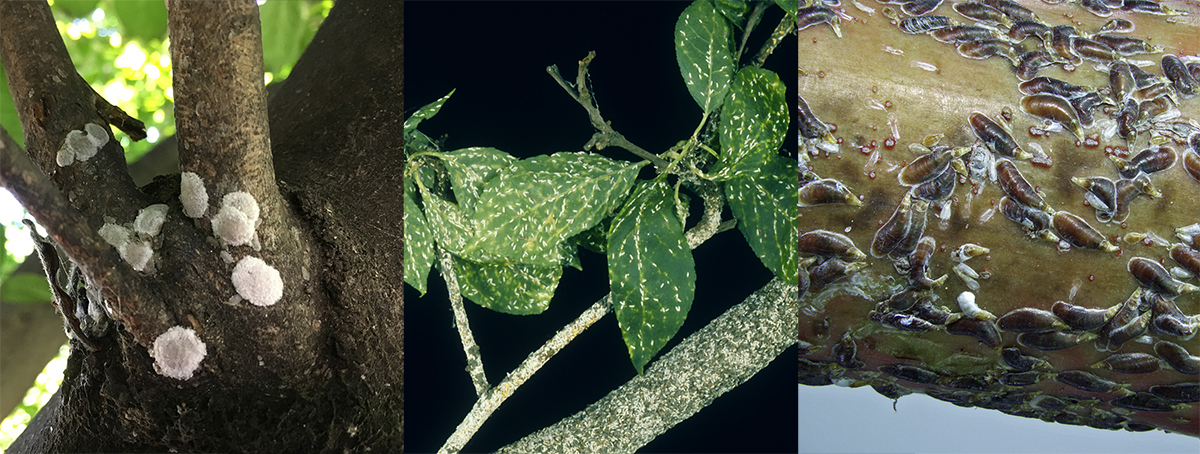
By Kait Chapman, Extension Educator in Lancaster County
Scale insects may be tiny, but they can cause big problems for your landscape plants. These fascinating, yet troublesome pests target trees, shrubs, flowering plants and more, often going unnoticed until they become a serious infestation.
WHAT’S THE BUZZ ABOUT SCALES?
Scale insects have a unique life cycle that makes them both intriguing and challenging to control. While adult male scales have wings, females are wingless and remain immobile on plants, hiding beneath a protective shell-like covering. Under this shield, females lay eggs, which hatch into tiny, mobile “crawlers.” These crawlers actively search for a feeding spot where they use their piercing-sucking mouthparts to feed on plant sap. As they mature, scales lose their legs and develop a waxy shell that serves as armor against predators and other environmental threats.
Because of their small size and inconspicuous nature, scale populations can build up significantly before they are detected, making early identification and control essential.
TIMING IS KEY FOR CONTROL
There are many types of scale insects, and correctly identifying the species is the first step in effective pest management. Scale insects are most vulnerable in their crawler stage, right after hatching, when they are still mobile and unprotected by their waxy covering. This stage typically occurs only once or twice a year, so knowing when to expect it is critical for successful treatment.
To check for crawlers, wrap a piece of sticky tape (sticky side out) around an infested branch or stem and inspect it regularly. If you find tiny crawlers on the tape, it’s time to take action.
Effective treatment options include horticultural oils, insecticidal soaps, acephate and pyrethroids. Additionally, pruning heavily infested branches can help reduce the population and enhance chemical control efforts.
___________________________________
Below are some common scale species and the timing of their crawler stages in Nebraska:
TYPE OF SCALE: HOST PLANTS — CRAWLER STAGE (IN NEBRASKA)
Euonymus scale: Privet, boxwood and other Euonymus spp. — Late May to June, Late July to August
Magnolia scale: Magnolia, tulip trees — Mid- to late- August
Oystershell scale: Ash, maple, lilac and many other hardwood trees and shrubs — Late May to early June, August
___________________________________
FOR MORE INFORMATION
For scales and other landscape and garden insects, visit https://byf.unl.edu/insects-spiders-more.